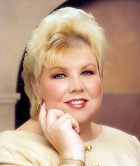
We have tried a bowel and bladder training program with not much success. Can you give some suggestions on how to make it better?
One of facilities’ first mistakes is when they attempt to train one floor or wing at one time. You can’t expect to take 20 to 30 beds and do successful training at one time.
Start low and go slow is your first rule. Pick no more than four residents to train at once, and remember that a call light is everyone’s responsibility!
Before starting a program and putting a resident on YOUR schedule, do an assessment. Learn the resident’s schedule. Train yourself to her schedule. When you try to train the resident to your schedule, the program never — or rarely — works.
Celebrate small successes. If you kept someone dry for one shift, celebrate it! The small steps are important to the resident and the staff.
Training is a very hard task, yet we let it slip off our tongues like it is easily achievable. Get the family and ALL of the facility’s departments involved with the training. Residents and families usually love when they feel everyone is involved toward the same goal.
When we talk about getting everyone involved, we mean activities, wound care staff, MDS nurses, housekeeping, dietary, administration. Everyone needs to know the training schedule, and no one is allowed to say, “That’s not my resident.”
If someone lives in the facility, she or he is everyone’s resident. Perhaps doing some sensitivity training before you start the program would help the staff get on board. There are many training programs available.
Remember: Start with a small number of residents to train and celebrate your successes, no matter how big or small they are!
From the September 01, 2012 Issue of McKnight's Long-Term Care News



